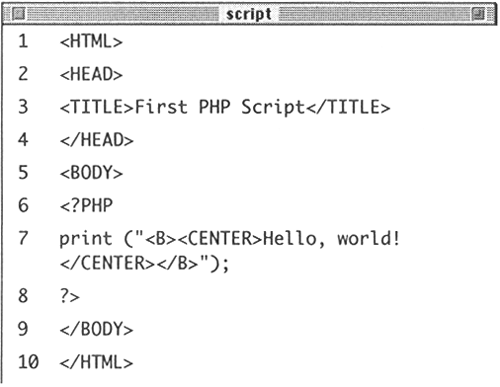Sending HTML to the Browser
| I l @ ve RuBoard |
| As those who first learned HTML were quick discover, viewing plain text in a Web browser leaves a lot to be desired. Indeed, HTML was created in order to make plain text more appealing and useful. Since HTML works by adding tags to text, you can use PHP to send HTML tags to the browser, along with our other data. To send HTML to the browser using PHP:
Tip HTML tags which require quotation marks (e.g., <FONT COLOR ="#000000"> ) will cause problems when printing from PHP, since the print() function uses quotation marks as well. To avoid complications, you escape the quotation marks using the backslash (\). In our example, the statement you would use is print "<FONT COLOR=\"#000000\">";. By escaping a quotation mark within your print() statement, PHP will print the mark instead of interpreting it as either the beginning or end of the print statement itself. I will cover many examples of escaping throughout this book. |
| I l @ ve RuBoard |
EAN: 2147483647
Pages: 116
- Chapter I e-Search: A Conceptual Framework of Online Consumer Behavior
- Chapter II Information Search on the Internet: A Causal Model
- Chapter VIII Personalization Systems and Their Deployment as Web Site Interface Design Decisions
- Chapter XI User Satisfaction with Web Portals: An Empirical Study
- Chapter XII Web Design and E-Commerce

